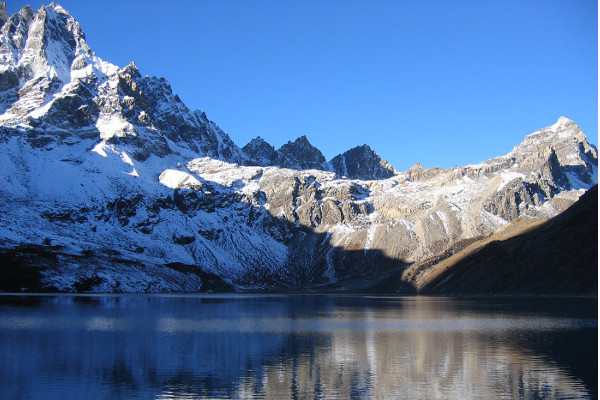The Gokyo Lakes lies at the head of the Dudh Kosi Valley and provides an excellent alternative to the classic Everest Base Camp trek.
The trek is especially good if you have a little more time on your hands as it takes in all the highlights of the classic Everest trek with the added bonus of seeing the beautiful Gokyo Lakes.
Hiking to Gokyo Lakes
The Gokyo trek itself is far more tranquil than the EBC trek as there are much less trekkers on the route. Another added bonus of the trek is that it is a circular trek in which there is no backtracking like you find on the classic EBC trek.
The highlight of this trek is the ascent of Gokyo Ri. Standing at over 5000m, the views from the summit are simply breathtaking. The peaks of Everest, Lhotse, Makalu and Cho Oyu can be seen! The view is often considered one of the best in Nepal and it is easy to see why. Climbing to the summit in the afternoon is a beautiful time as you will see sunset over the glimmering Gokyo Lakes.
The trek begins in Lukla after your flight from Kathmandu. For the first three days, the trail follows the traditional Everest Base Cam itinerary for the first three days up to Namchee Bazaar. Just after Namchee the trail veers off to the North-west via the towns of Dole and Machemo, and then onto the stunningly gorgeous Goyko Lakes. You then ascend Goyko Ri (5,357 meters) and traverses Cho La Pass (5,420 meters), one of the great passes in the Himalayas, before joining up again with the classic Everest Base Camp trek at Lobuche.
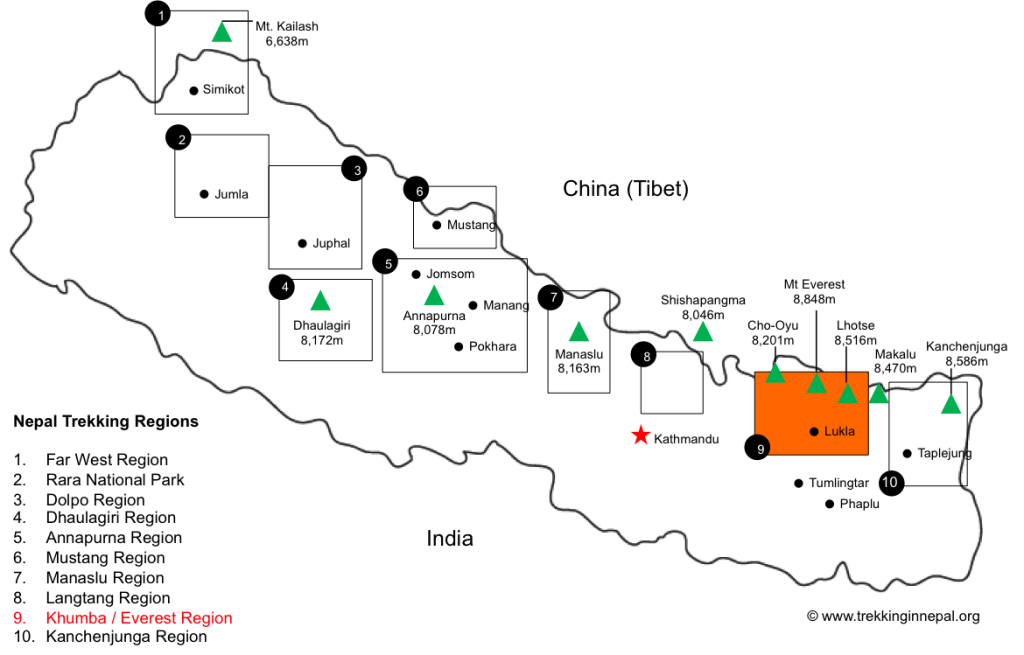
Everest Regional Map
Gokyo, in the Everest region, is on the Nepalese side of Mount Everest. Lonely Planet ranked the Everest Region as the sixth best area in the world to travel to.
Recommended Map
The Gokyo Lakes trail does not receive anywhere near the same footfall as the classic Everest Base Camp trek and the paths can often be confused with smaller yak trails.
Therefore, we recommend taking a detailed trekking map of the region. The area is sparse, and it is quite possible to get lost in the warren of valleys that lie on either side of the main trail. The most up to date and recent map is Everest and Gokyo by Nepa Maps.
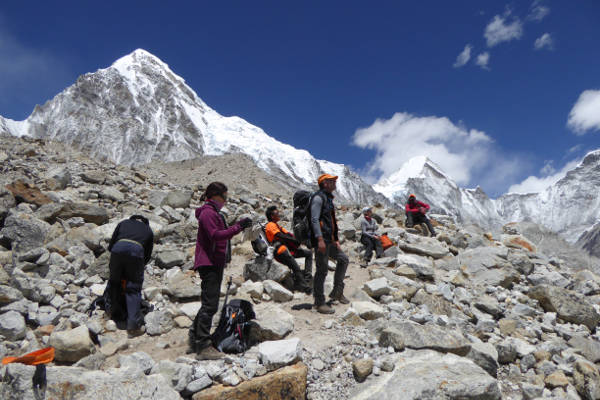
Gokyo Lakes Trek Itinerary
Here is a general itinerary for a standard 16-day version of the Gokyo Lakes trek. Please note that there are several Gokyo Lake itineraries that can be completed.
Accommodation will be in tea house lodges.
Here are some pictures from the trail to Gokyo Lakes.
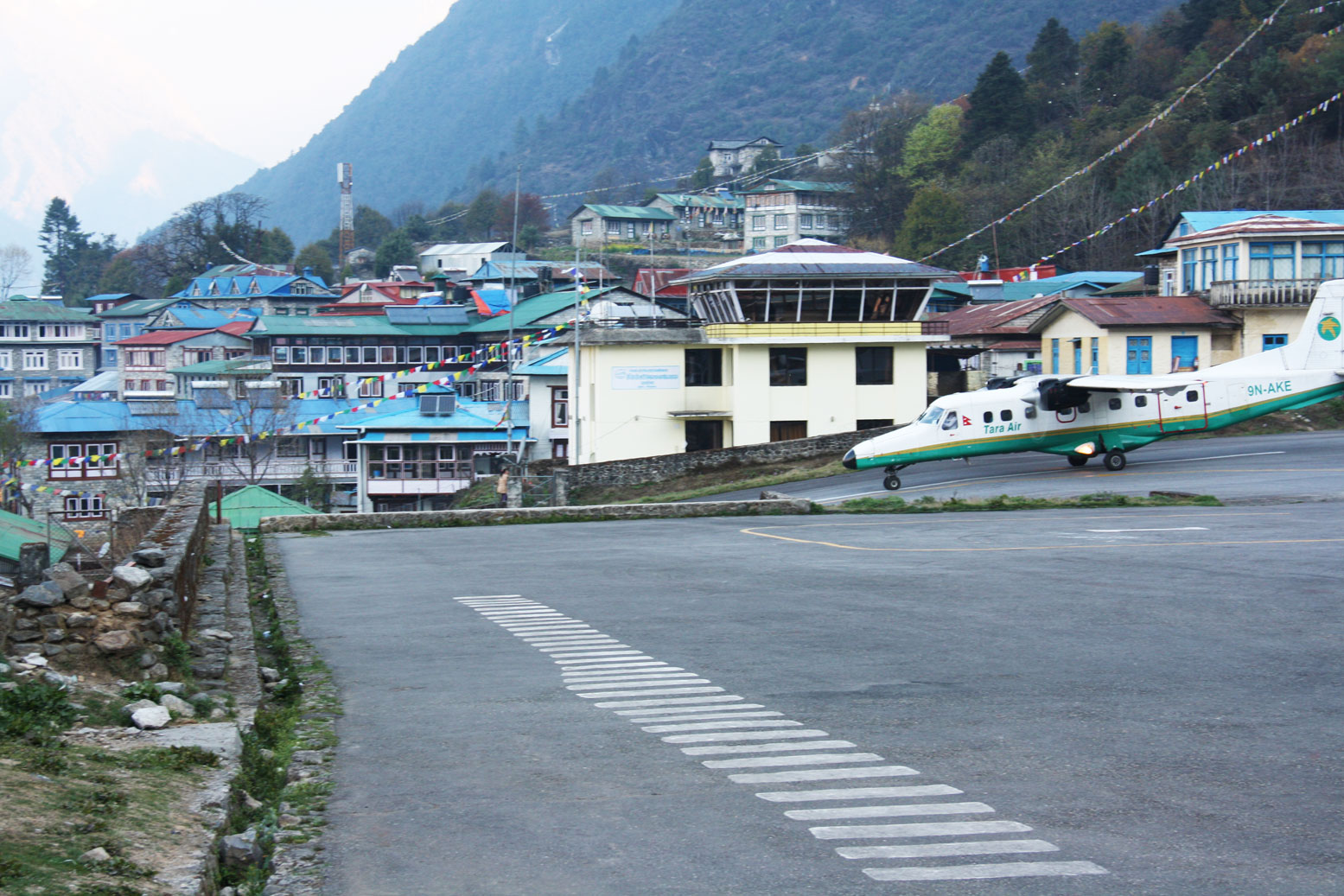
Lukla airport
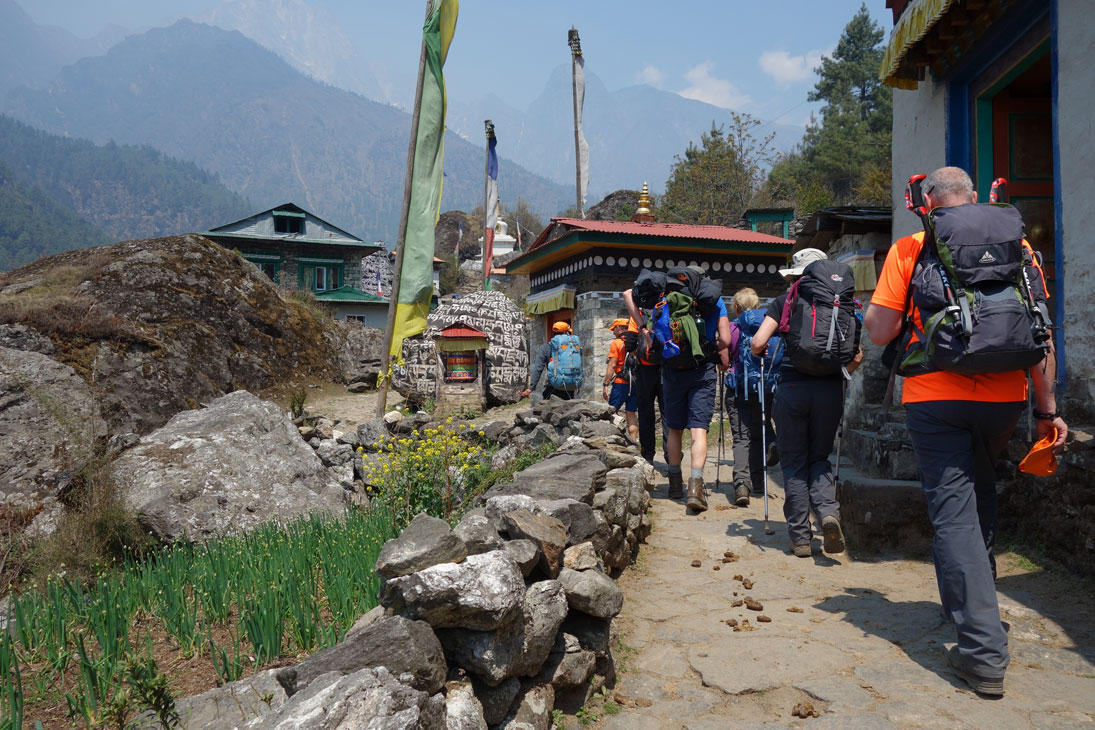
Hiking to Namche.
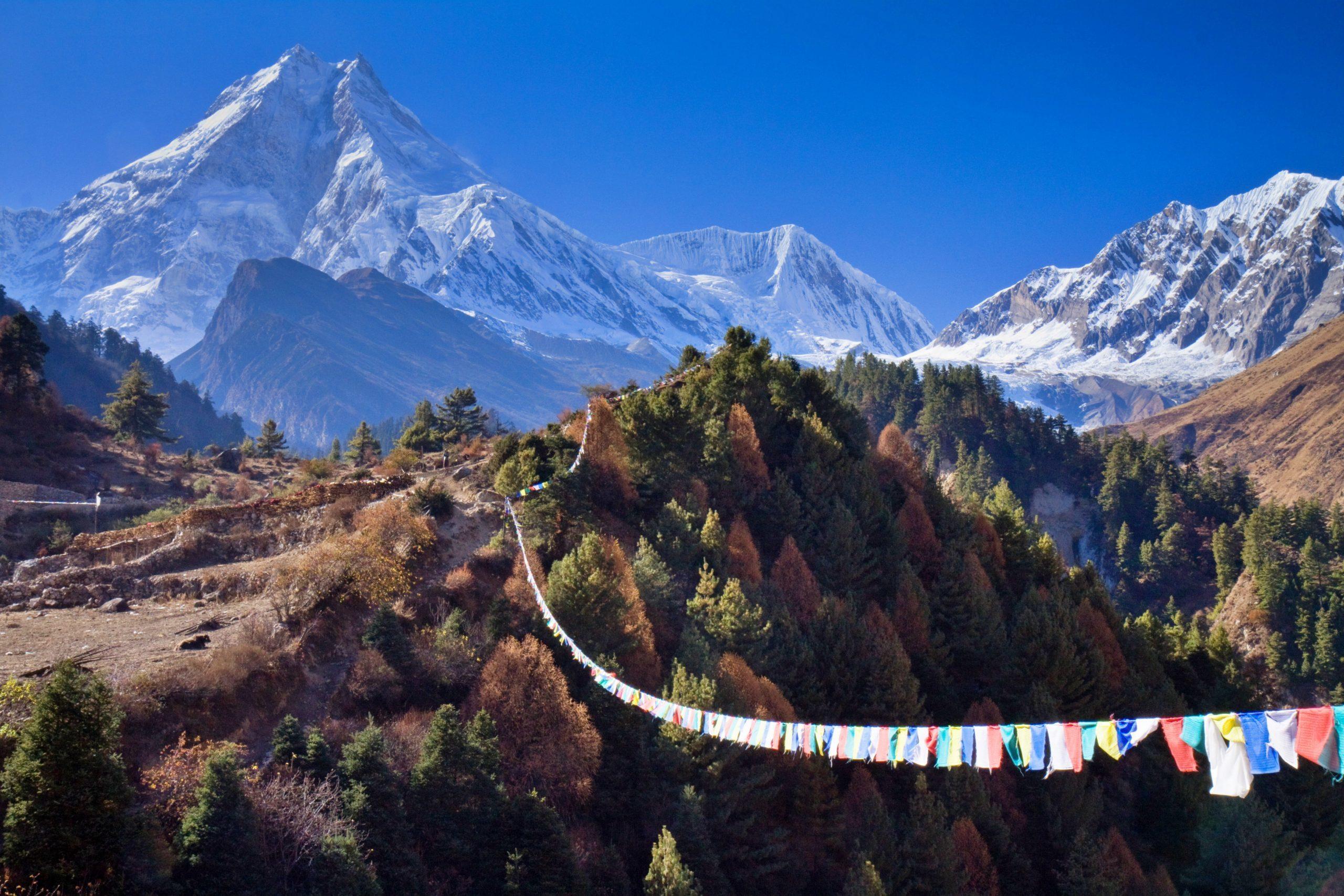
Incredible mountain scenery near Namche
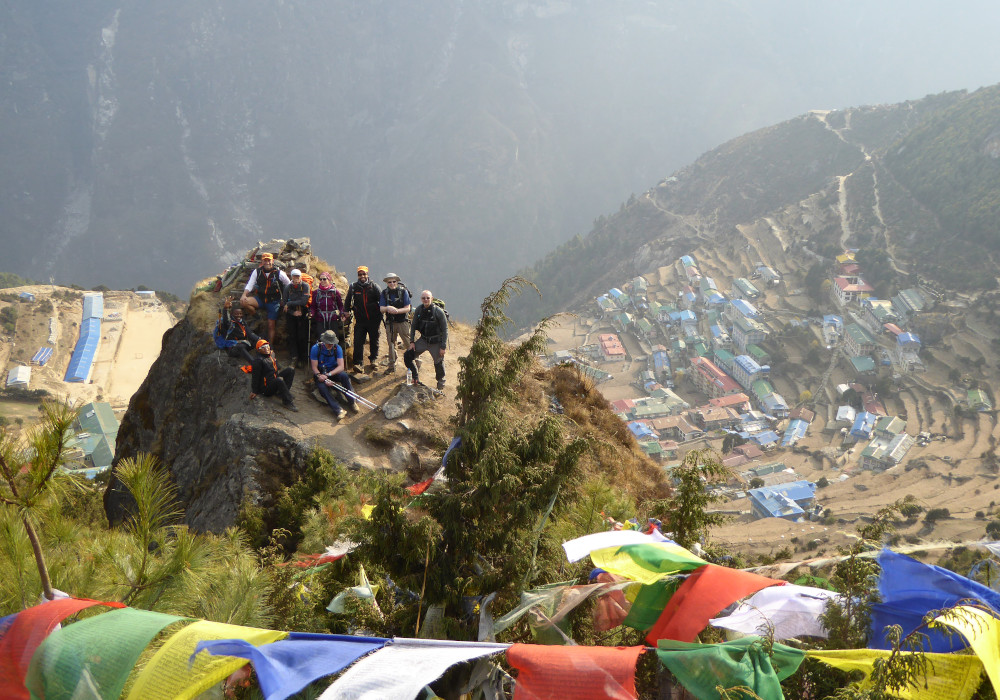
Namche bazaar below
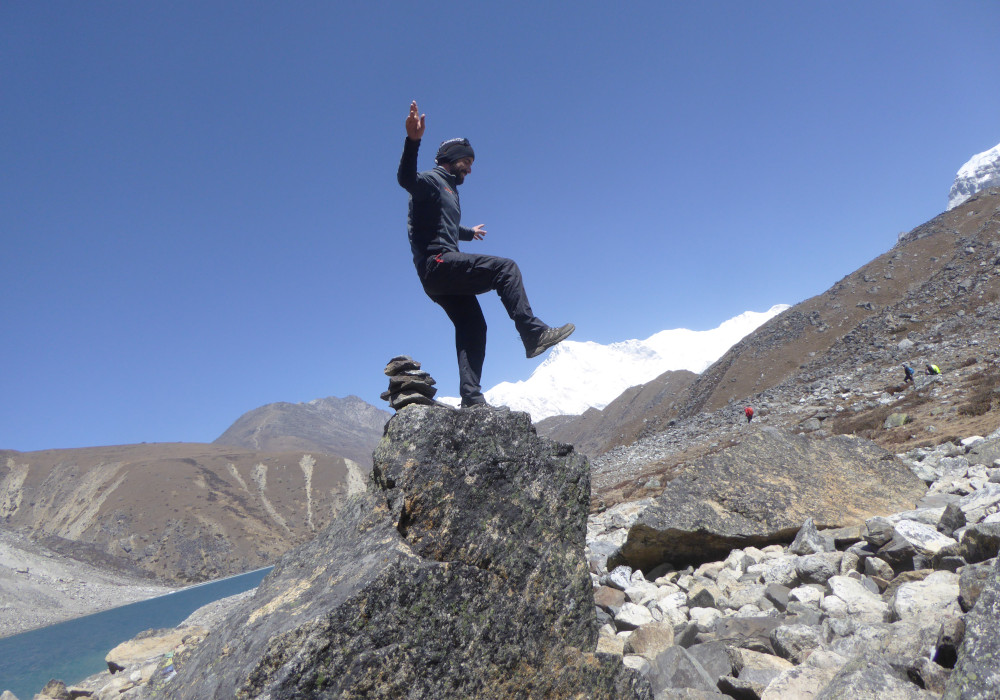
Standing on Cho Oyu in the far background. A Himalayan 8000er
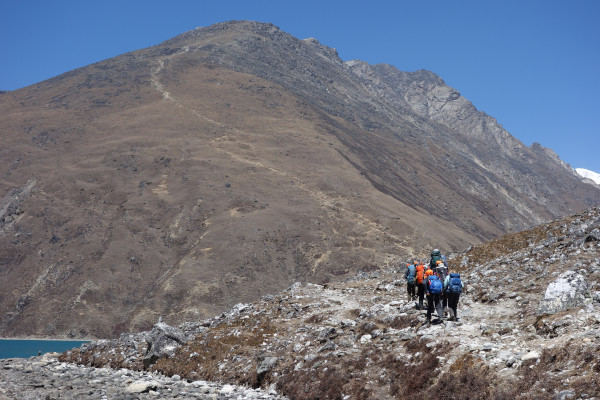
Hiking up Gokyo Ri
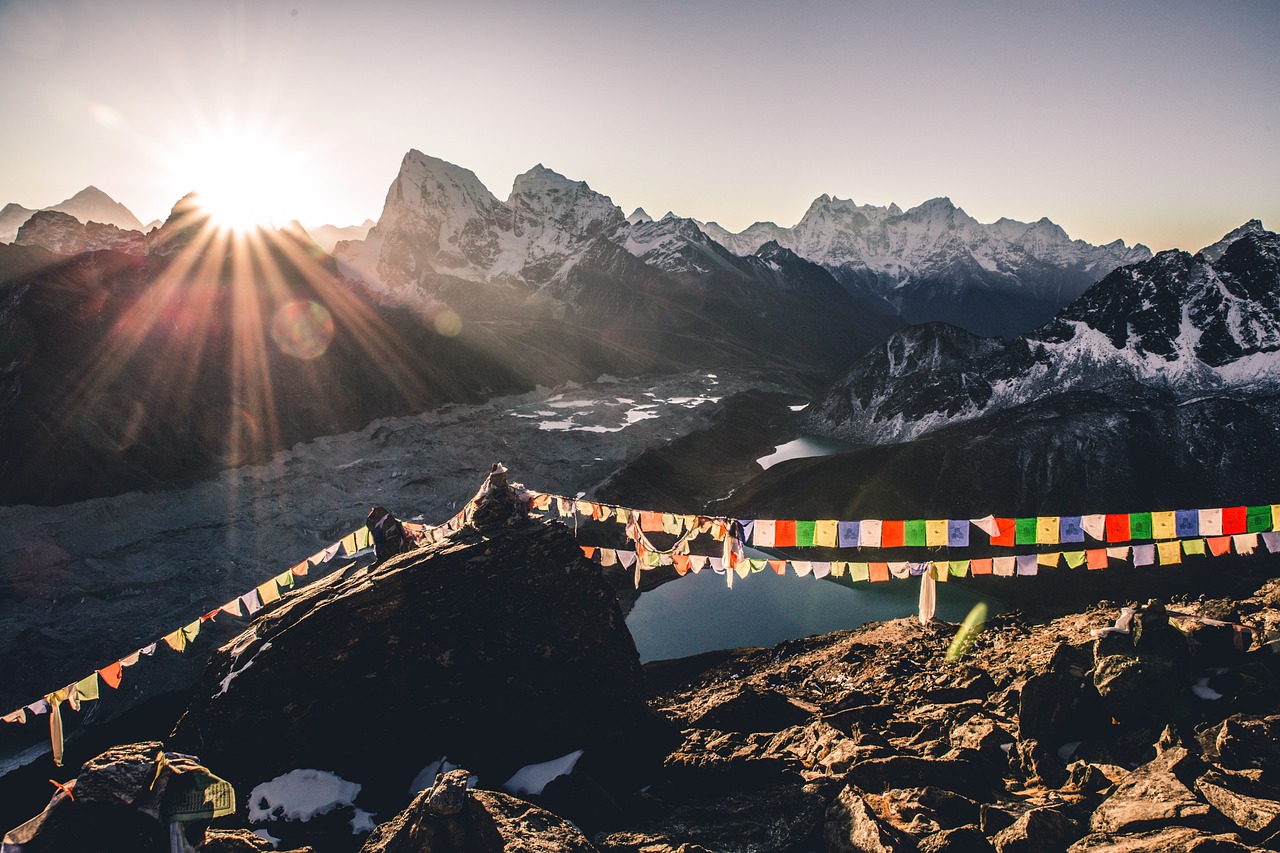
View of Ngozumba glacier and the Himalyas from Gokyo Ri
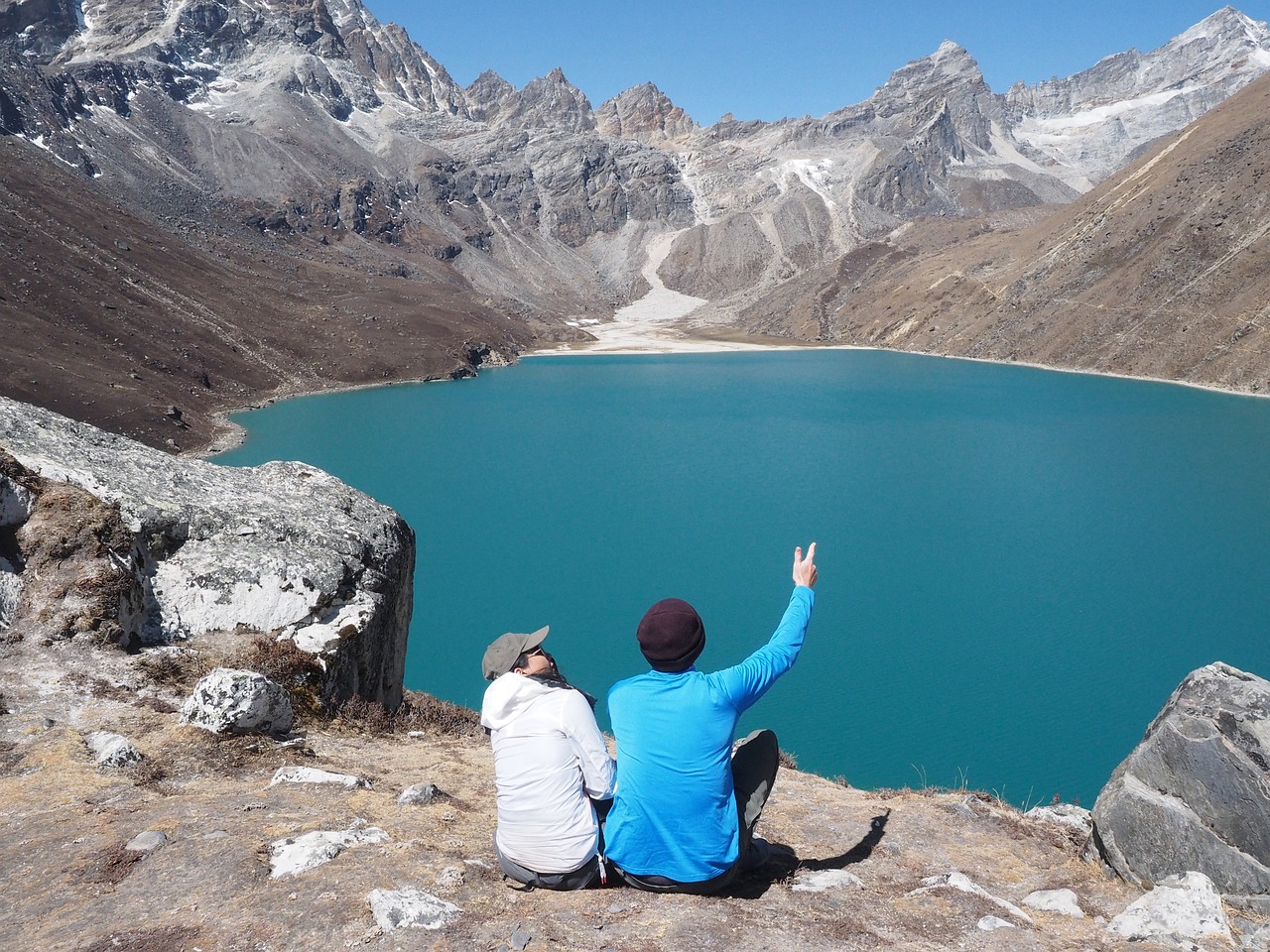
The emerald green Gokyo lakes
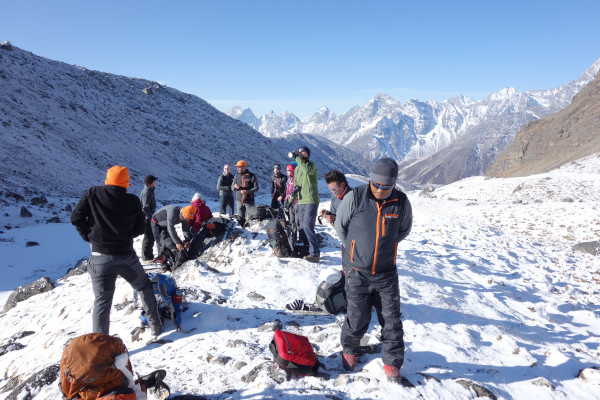
Hiking over Cho La
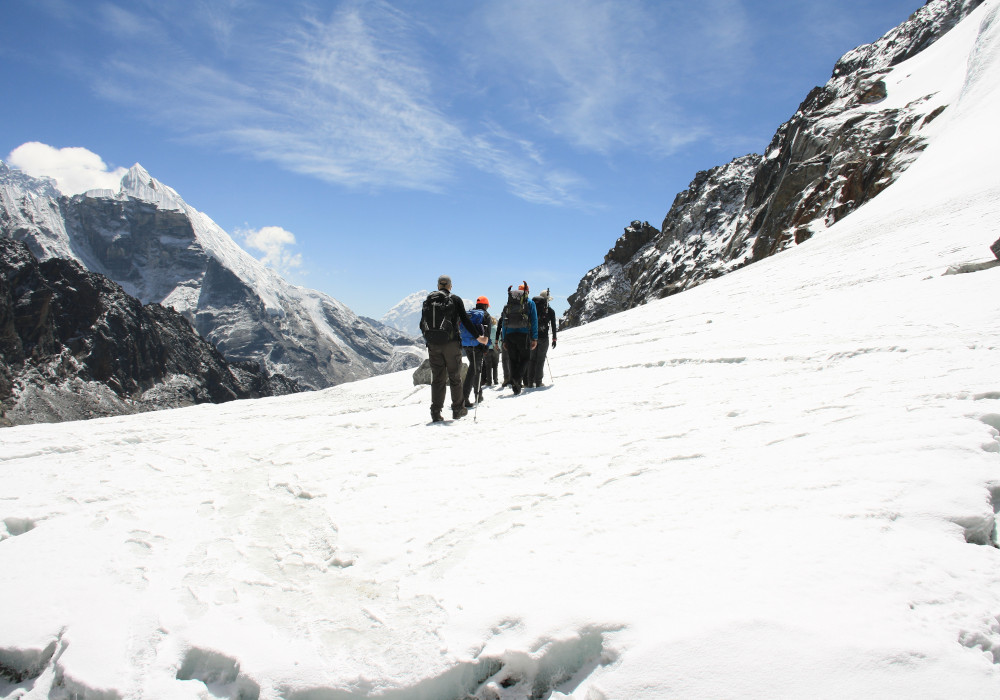
Glacier crossing over Cho La
Gokyo Lakes Hikes FAQ
How much does the Gokyo Trek cost?
A Gokyo Trek costs anywhere from $1,500 to $3,500, depending on which trekking company you book your trip with. It is possible to hike the Gokyo trail independently and this will cost less than $1000.
See our review of the top Nepal trekking companies.
When is the best time to trek to Gokyo Lakes?
The best time trek to Gokyo Lakes is either from March to May or from late September to late November.
The official Nepal trekking season is October and November when weather is usually stable and visibility excellent. In the earlier, pre-monsoon period from March to May, there is lovely spring growth, and it is also a good time to hike to Gokyo.
Is altitude sickness a risk in the Gokyo Region?
Altitude sickness is a risk in the Gokyo region because the Gokyo Lake trek ascends to some high-altitude points. It's important to have a good understanding of the risks associated with high altitude trekking and how the body acclimatises to high altitude.
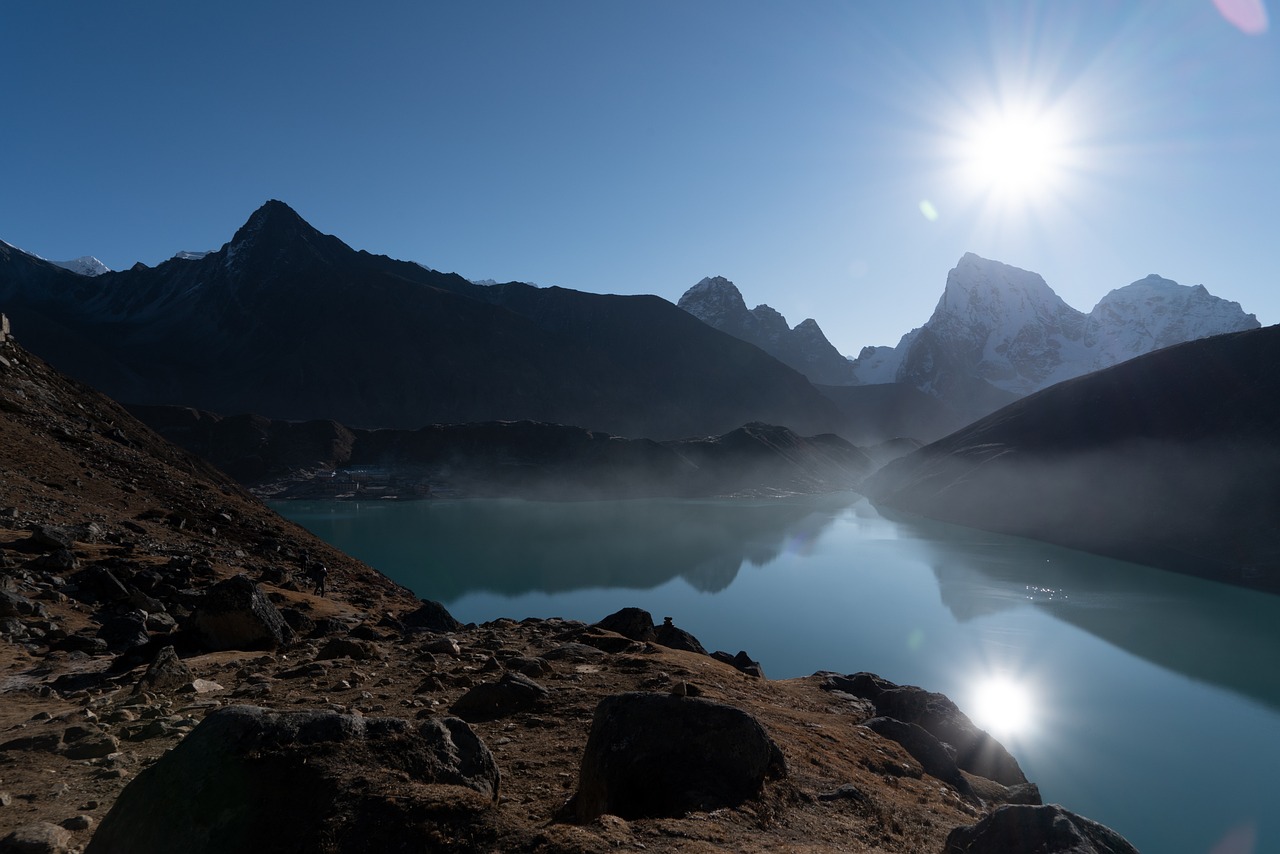
Gokyo Lakes
Are there any recommended guidebooks for the Gokyo Lakes Trek?
There are a few guidebooks for the Gokyo Lakes Trek that we highly recommend.
Sian Pritchard-Jones and Bob Gibbons’s have produced a great Gokyo guidebook called A Trekking Guide to Everest.
For a more general guide to Nepal trekking, you may want to consider the No products found..
We also highly recommend Everest: A Trekker’s Guide – Trekking Routes in Nepal and Tibet by Cicerone Guides.
What insurance do I need for the Gokyo Lakes hike?
Trekking insurance in Nepal is recommended but not mandatory.
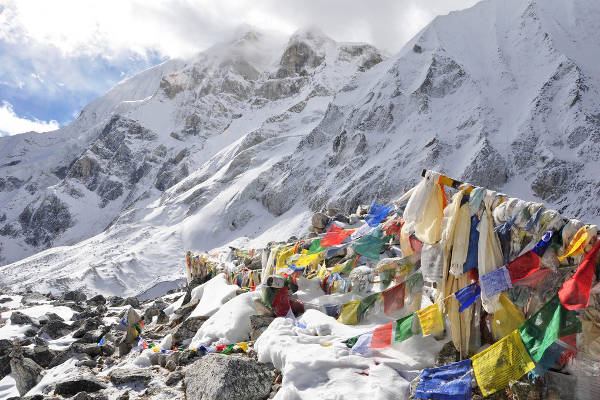
Continue browsing
See more information on Nepal. Or check out these other Nepal hiking articles:

